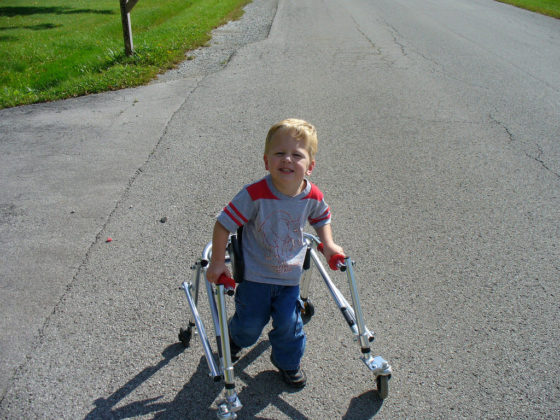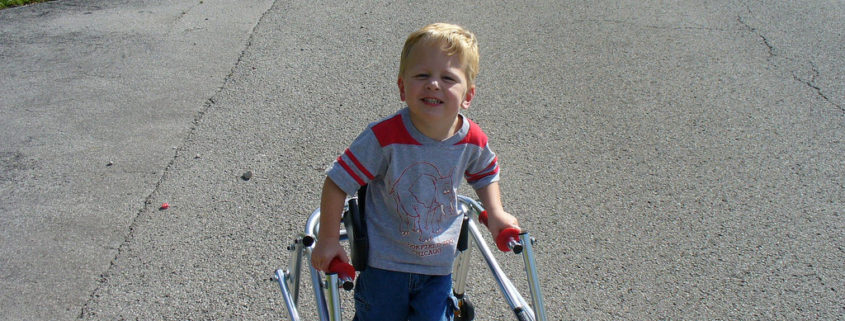The Best Speech Therapy for Cerebral Palsy
If your child has cerebral palsy, you aren’t alone — even though it may feel like it sometimes. Cerebral palsy, or CP, is a group of disorders that affect a person’s ability to move and maintain balance and posture. It’s caused by abnormal brain development or damage to the developing brain, which creates problems with the person’s ability to control his or her muscles.
CP is the most common motor disability in childhood, with approximately 1 in 323 children being identified with CP, according to the Centers for Disease Control and Prevention (CDC). While the “cerebral” part of the term “cerebral palsy” has to do with the brain, “palsy” refers to a weakness or problem using muscles. Some children with cerebral palsy may need assistance walking or can’t walk at all, and although symptoms don’t worsen, they can change over their lifetime.
Parents of children with cerebral palsy have a lot to consider in terms of how best to help their child. A Pinterest board is devoted to thousands of resources on different kinds of therapies, with questions such as “Will my child with cerebral palsy walk?” and information on treadmill training, using a Wii Fit to improve motor performance, and how to manage scoliosis. A new show on ABC, “Speechless,” also explores life with cerebral palsy and communication challenges.

If your child can’t communicate effectively, it can be daunting to figure out his or her needs and help them on their way toward developing emotionally and intellectually. We’re here to help you research the best speech therapy options for your child.
Contents
Types of cerebral palsy
First, it’s helpful to know all the types of cerebral palsy before what therapy might be needed. They are:
Spastic Cerebral Palsy
Spastic cerebral palsy is the most common type of CP, affecting about 80 percent of people with CP, according to the CDC. Those with spastic cerebral palsy have increased muscle tone, or stiff muscles, therefore making their movements awkward. There are then different types of spastic CP, including diplegia/diparesis (mainly in the legs), hemiplegia/hemiparesis (only one side of the body, with the arm usually more affected than the leg), and quadriplegia/quadriparesis (affects all four limbs, the trunk, and the face). Those with quadriplegia/quadriparesis often have other developmental disabilities, including speech problems.
Dyskinetic Cerebral Palsy
Dyskinetic cerebral palsy makes it difficult for people to sit and walk because they can’t always control the movement of their hands, arms, feet, and legs. The movements can be slow and writhing, or rapid and jerky. Occasionally, the face and tongue are affected as well, which makes for issues with swallowing and talking. Their muscle tone changes day to day.
Ataxic Cerebral Palsy
Ataxic cerebral palsy creates problems with balance and coordination. Quick movements, like writing or reaching for something on a shelf, need a lot of control. People with ataxic CP also can be unsteady when they walk.
Mixed Cerebral Palsy
Some of the above CPs can be mixed, with people experiencing symptoms of more than one kind. The most common mix is spastic-dyskinetic.
Speech therapy effectiveness for cerebral palsy
While there are various therapies to work on motor skills for children with cerebral palsy, we’ll focus on just speech. People with dyskinetic and some types of spastic CP, or some combination, will need speech therapy most.
Aside from problems with talking, people with cerebral palsy have trouble with gestures that are used in communication. Speech and language therapy (SLT) can include introducing some speech aids — such as symbol charts or assistive devices with synthetic speech like computers and voice synthesizers — or training communication partners.
However, evidence to the effectiveness of SLT is limited.
According to a review of 16 studies on speech therapy for cerebral palsy conducted by the Cochrane Library, participants in recent research on CP have varied widely in age, type and severity of cerebral palsy, as well as cognitive and linguistic skills. For studies that focused directly on children, it was found that SLT could improve skills — but sample sizes were small and lacked thoroughness on the maintenance of the skills, either solo or with a therapy partner.
Because children with cerebral palsy can later grow into adults with functional issues at work or depression, it’s important to try speech therapy for those who need it.
Communication strategies for children
Communication is a big part of growing up. It helps you make friendships, learn new things at school, and tell your parents what’s bothering you. According to the Cerebral Palsy Foundation, multi-modal communication strategies for those with cerebral palsy involve speech, gestures, facial expressions, and technology.
Speech language pathologists help develop strategies to see what other ways people can communicate. With a familiar communication partner, you might use a special gesture that they know and recognize. For some, word prediction or abbreviated expansion can be used with synthetic speech. Pointing to an icon and looking up to say “yes” also are two types of non-traditional means of communication that can be as effective as traditional speech for someone with cerebral palsy.
Augmentative communication is important as soon as possible, the Cerebral Palsy Foundation says, even if your child is just 1 year old and hasn’t done much talking yet. While speech therapy will deal with articulation, fluency, and resonance, augmentative and alternative communication includes developing all forms of communication other than oral speech. For example, sign language may not really help someone with cerebral palsy who has muscle weakness in their arms, but other types of body language may.
It’s important to note that augmentative communicators should not stop using speech if they are able to do so — aids are meant to only enhance communication.
No matter the method you think will work best, your first step in helping your child is to find a reputable speech language pathologist.
Is cerebral palsy preventable?
It’s a lot to take in when you first learn your child has cerebral palsy. There are so many things to do, it can be easy to be overwhelmed.
So, can it be prevented?
According to the CDC, there are a variety of factors that can cause cerebral palsy:
- Low birth weight and premature birth. The prevalence of CP was 6.2 per 1,000 live births among children with low birth weight in an Atlanta study.
- Disruption of blood and oxygen supply to baby’s brain. Birth hypoxia, or disruption of oxygen to a developing baby’s brain, accounts for fewer than 10 percent of CP cases. However, when a blood clot blocks a blood vessel in the brain (an ischemic stroke), it can cause brain damage during pregnancy or shortly after birth that can result in CP.
- Mom gets an infection. With children born full-term, a blood infection in the mother or fever during labor, among other signs of infection, has been associated with an increased risk of CP.
- Birth defects. Finally, children with CP more often had birth defects of the central nervous system than those without.
Brain damage is a big one, though, and it can be caused during birth through an injury by no fault of the mother or baby. Cerebral palsy also isn’t something babies are just born with — it also can be acquired by a head trauma sustained after birth.
No one wants to think about a potential birth injury that could happen during labor and delivery, but that’s just it — they could happen. If you have a complicated labor and complications arise, we may be able to help. If your child has been diagnosed with cerebral palsy, make sure to ask these questions of his or her doctors. We also have support resources to get you the answers you need.
Image Credit and License.








Leave a Reply
Want to join the discussion?Feel free to contribute!